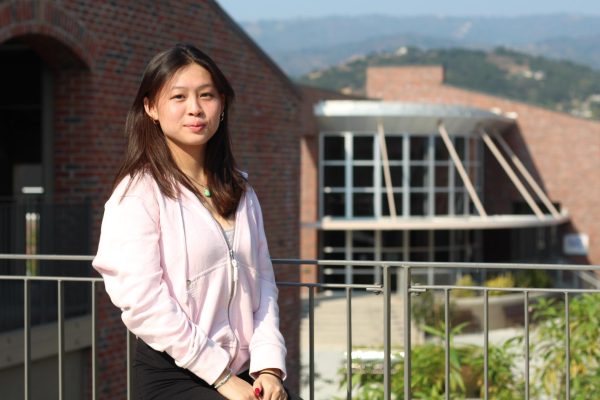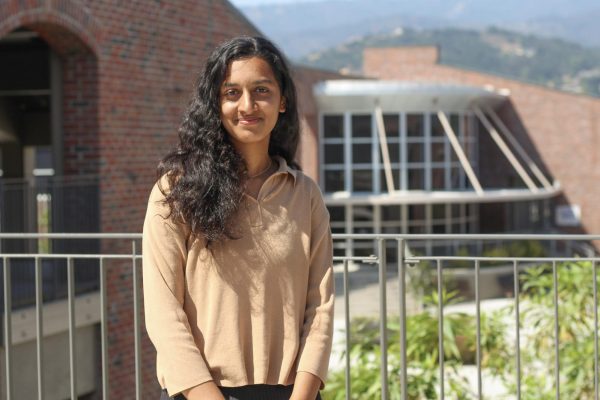When the service manager saw senior Bharath Katchapalayam rummaging through the bike brakes at Trail Head Cyclery, he asked Katchapalayam how old he was. Katchapalayam said he was 16.
“Do you want a job?” asked the service manager.
Katchapalayam filled out the application, was accepted in November 2022 and has now worked at the bike shop for over a year. While dealing with a wide array of bikes at his workplace, Katchapalayam has noticed the cultural shift from traditional bikes to electric bikes. Though electric bikes can be useful, Katchapalayam emphasizes the importance of properly understanding the dangers they may present.
“I would feel uncomfortable riding some electric bikes without at least some protection — like a full face helmet or something,” Katchapalayam said. “There are electric bikes that can hit 30 miles an hour without the person having to pedal very hard. With that technology coming out and with a lot of young people having access to this, there definitely needs to be a shift towards being mindful of safety. A lot of people don’t think riding electric bikes is that serious, but they don’t realize that they’re doing motorcycle things without motorcycle gear.”
Assistant principal and Safe Routes to School (SR2S) Liaison Sydney Fernandez has noticed that the bike racks at MVHS are often full, with many electric bikes. In turn, she hopes to ensure bike safety so students feel a sense of security. Understanding students’ methods of commuting to school through classroom surveys and stationing people at entrances to count the number of bikers has allowed for a better gauge of traffic flow patterns and determines how the school can help ensure bikers’ safety and needs.
“There is an active group of students who bike, and I’ve noticed within my time here, there’s been an uptick of electric bikes and electric scooters and other kinds of alternatives to traditional biking,” Fernandez said. “I think that’s great and we should be supporting and encouraging it. I think it’s a good way for students to be independent to get from place to place.”
Fernandez works closely with Safe Routes to School (SR2S) Coordinator Cherie Walkowiak, who works for the organization which aims to promote walking and biking to school. For younger students in elementary and middle school, SR2S hosts activities and presentations to teach students about biking and dangers to look out for on the road.
Meanwhile, at MVHS, SR2S attempts to draw attention to biking through interactive activities such as the blender bike, which allows students to produce a smoothie by pedaling a bike attached to a blender motor. Another program, which was successful at Cupertino High School, is a bike bus, where administrators and teachers bike through the MVHS community to pick up students and bike as a group to school. Fernandez hopes to mimic the same effect at MVHS during March to get more students to bike.
“We’ll just use that information previously gathered to figure out what is the right route for the bike bus and what’s going to be the most efficient way to get the most student participation,” Fernandez said. “It’s really to increase awareness of biking to school as opposed to taking a car to school. We would be promoting not just the event, but also the route, and have places on the route where students could come meet us. The routes are very strategically picked, so they are the safest routes possible.”
While most roads are safe, Katchapalayam says that some of the roads he has to bike along are narrow and don’t provide the best protection for bikers. He spent his sophomore year biking to and from school, but switched to driving during junior year for convenience and safety. Following multiple close calls with cars while riding a bike, Katchapalayam is now a more diligent driver, especially when driving near bikes. The lessons he learned from biking have stuck with him, making him more aware on the roads.

“I know what it feels like to be in that vulnerable position outside of the car so now I make more moves to make the bikers feel safer,” Katchapalayam said. “I’m more mindful at night when a lot of people don’t wear reflective vests. I just have to be careful, knowing that there might be a kid riding their bike on the street. Having been a bike rider had a bit of an effect, but it’s mostly just me trying to make it easier for other bikers to feel comfortable when I’m driving.”
Walkowiak finds that physical barriers in protected bike lanes are also an added safety element, which can be seen on McClellan and Bubb Roads. These bike lanes were further evaluated after the death of MV student Ethan Wong in 2014, who was hit by a big rig at the intersection of these roads, and the protected bike lanes were implemented in 2021.
“The infrastructure has improved in the last two years in Cupertino so it’s really paving the way — literally — for people to be able to walk and bike if that’s what they want to do,” Walkowiak said. “In the past, there were certain roads where you didn’t feel safe, but I feel like Cupertino has come a long way and most of our routes are pretty safe now, so people can have a choice to walk and bike. Additionally, every year we repave certain parts of the city, so I feel like the city has done a really good job in laying a foundation for biking culture.”











